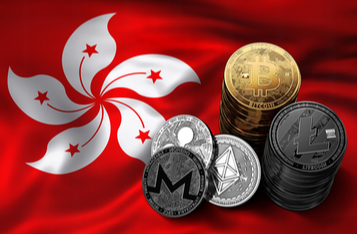Wormhole Adds Support for Mantle Network, Enhancing Ethereum L2 Interoperability
Wormhole now supports Mantle Network, an innovative Ethereum Layer 2 solution, offering high performance and low-cost EVM environment.

Wormhole, a leading interoperability platform, has announced its support for Mantle Network, an innovative Ethereum Layer 2 (L2) solution. The integration aims to provide developers and users with an exceptional on-chain experience by combining high performance and low-cost execution with Ethereum's robust security framework, according to Wormhole.
What is Mantle Network?
Mantle Network is an Ethereum Layer 2 solution designed to deliver a high-performance, low-cost EVM (Ethereum Virtual Machine) environment. Utilizing a unique modular architecture, Mantle aims to achieve strong security guarantees. The network leverages optimistic rollup technology and a specialized data availability layer called Mantle DA, powered by EigenDA technology.
How Does Mantle Work?
Mantle Network operates as a rollup, using Ethereum validators and consensus protocols to validate transactions. Its modular architecture separates execution (Mantle L2), consensus and settlement (Ethereum), and data availability (Mantle DA) into distinct layers.
- EVM-Compatible Execution: The L2 execution layer handles transaction execution and ensures compatibility with existing Ethereum contracts and tools.
- Consensus and Settlement: These processes occur on Ethereum, ensuring that L2 state transitions are validated under Ethereum's security guarantees.
- Scalable Data Availability: Mantle uses an independent data availability module (Mantle DA), which reduces costs by over 90% compared to having data availability on Ethereum L1.
Benefits of Mantle Network
Developers and users can enjoy several key benefits on Mantle Network:
- EVM Compatibility: Existing Ethereum contracts and tools can operate on Mantle with minimal modifications, facilitating a seamless migration for developers.
- High Performance: The combination of optimistic rollup technology and a dedicated data availability layer delivers high throughput and low latency.
- Low Fees: Mantle significantly reduces gas fees and overall transaction costs compared to Ethereum L1 or other L2 solutions.
- Security: Mantle largely inherits Ethereum's security guarantees, ensuring that user funds are protected at the highest possible level.
- Fast Finality: Users can customize transaction confirmation requirements to achieve near real-time confirmation latency with minimal security trade-offs.
How to Transfer Assets to or from Mantle Network
If you have assets on any of Wormhole’s 30+ connected blockchains and wish to bridge to or from Mantle, you can use the Portal Bridge by following these steps:
- Head to Portal Bridge.
- Connect your wallet.
- Select Mantle as either the source or target chain for your transaction.
- Complete the transfer process.
How to Connect Your App to Mantle Network
If you are a developer looking to enable token transfers to and from Mantle, you can do so in just three lines of code via Wormhole Connect. This tool allows developers to integrate wrapped and native token transfers directly into their application UIs, facilitating seamless bridging across Wormhole’s 30+ connected blockchains, including Mantle, secured by the Wormhole Guardians.
To start integrating Connect and enabling your application on Mantle, developers can check out the NPM package to get started.
About Wormhole
Wormhole is a leading interoperability platform that powers multichain applications and bridges at scale. It provides developers access to liquidity and users across over 30 leading blockchain networks, enabling use cases that span DeFi, NFTs, governance, and more. Trusted by teams such as Circle and Uniswap, Wormhole has facilitated the transfer of over $40 billion through more than 1 billion cross-chain messages.
Image source: Shutterstock

